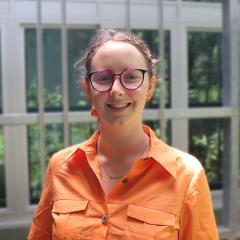Stream 1 sampling of mine wastes in North Queensland
Read about MIWATCH’s recent trip to sample tailings and mine-affected waters in North Queensland.
In late September, MIWATCH members Rosie Blannin, Allan Silva Gomes and Olivia Mejías headed up to the Atherton Tablelands in Far North Queensland.
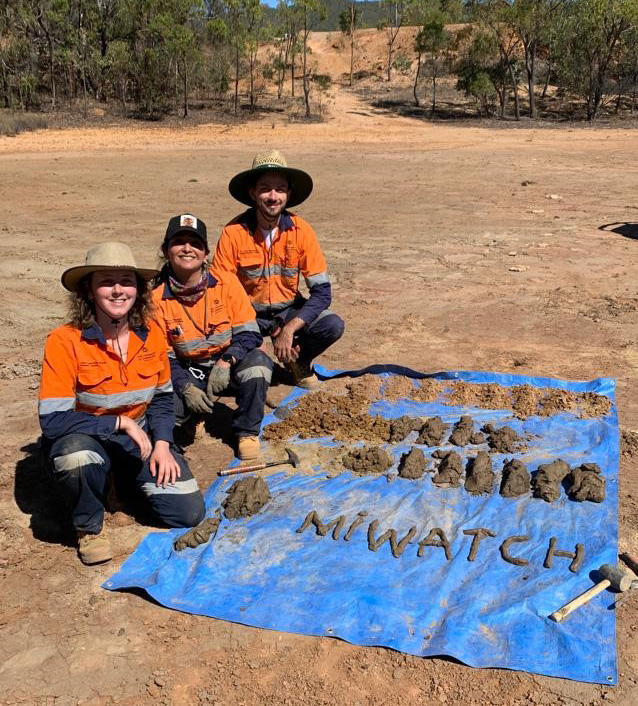
The Irvinebank-Herberton area contains historically significant mineralisation for a range of metals including tin, tungsten, molybdenum, silver, gold, copper, lead, zinc and antimony. Tin deposits were first discovered in 1875 and were mined on and off until the late 1980s, leaving several mine waste sites in the area.
MIWATCH previously sampled the tailings in nearby Herberton and the waste rock and mine-affected waters at the Baal Gammon mine.
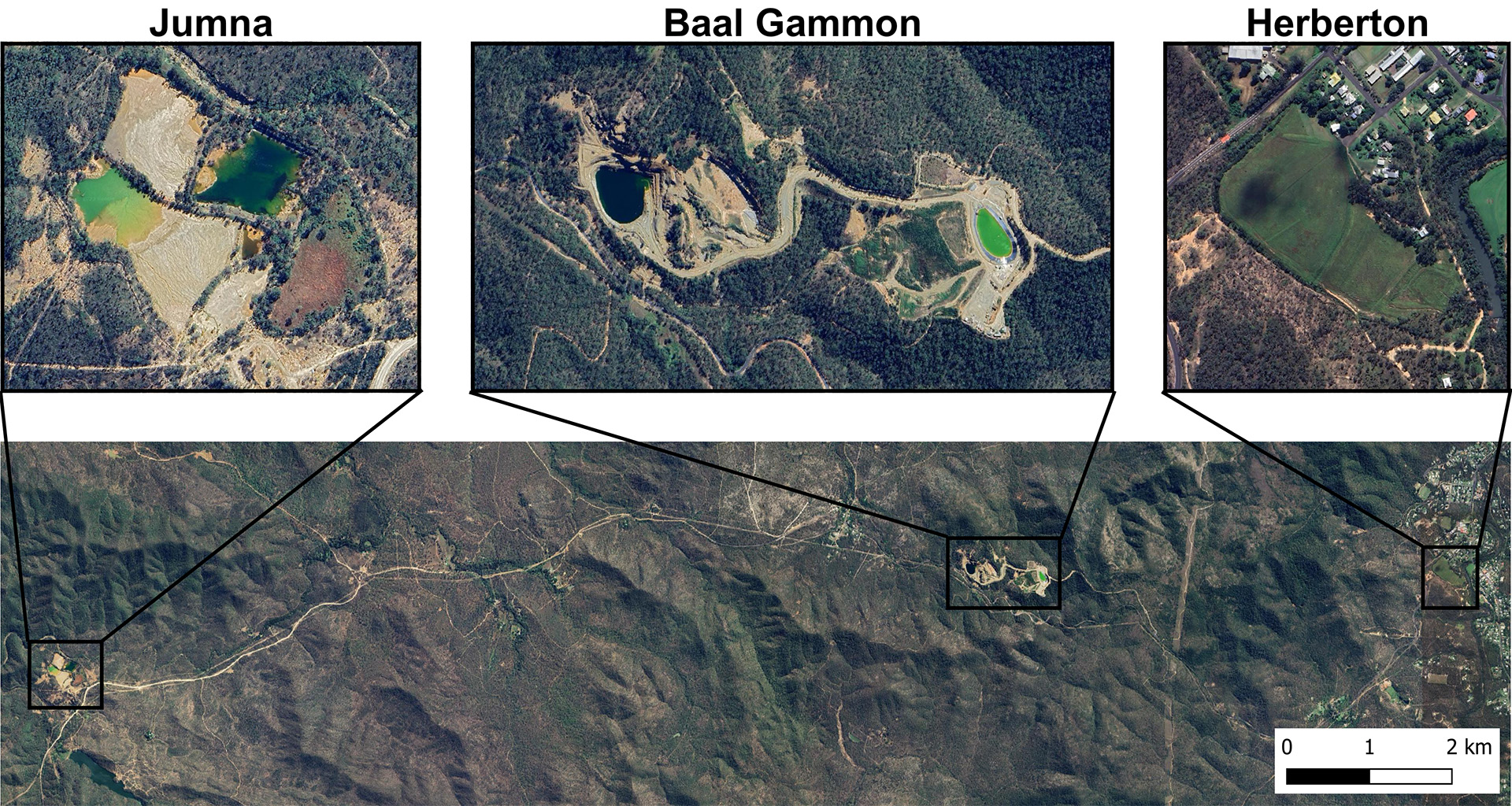
The Jumna plant was one of several processing plants in the district and was operated between 1972 and 1987, processing tin ore from various mining activities in the area. The aim of this trip was to sample the tailings and mine-affected waters at the Jumna site, in the search for indium and other critical metals that may be hosted in the mine wastes.
Rosie and Olivia (along with Anita Parbhakar-Fox and Laura Jackson) visited the site on a reconnaissance trip earlier this year and found that some areas of the tailings were flooded. After the dry season, these ponds have now disappeared, allowing the MIWATCH team to sample the tailings across the site. The sampled tailings will now go though MIWATCH’s ‘Stream 1’ integrated geochemistry-mineralogy critical metal assessment program.
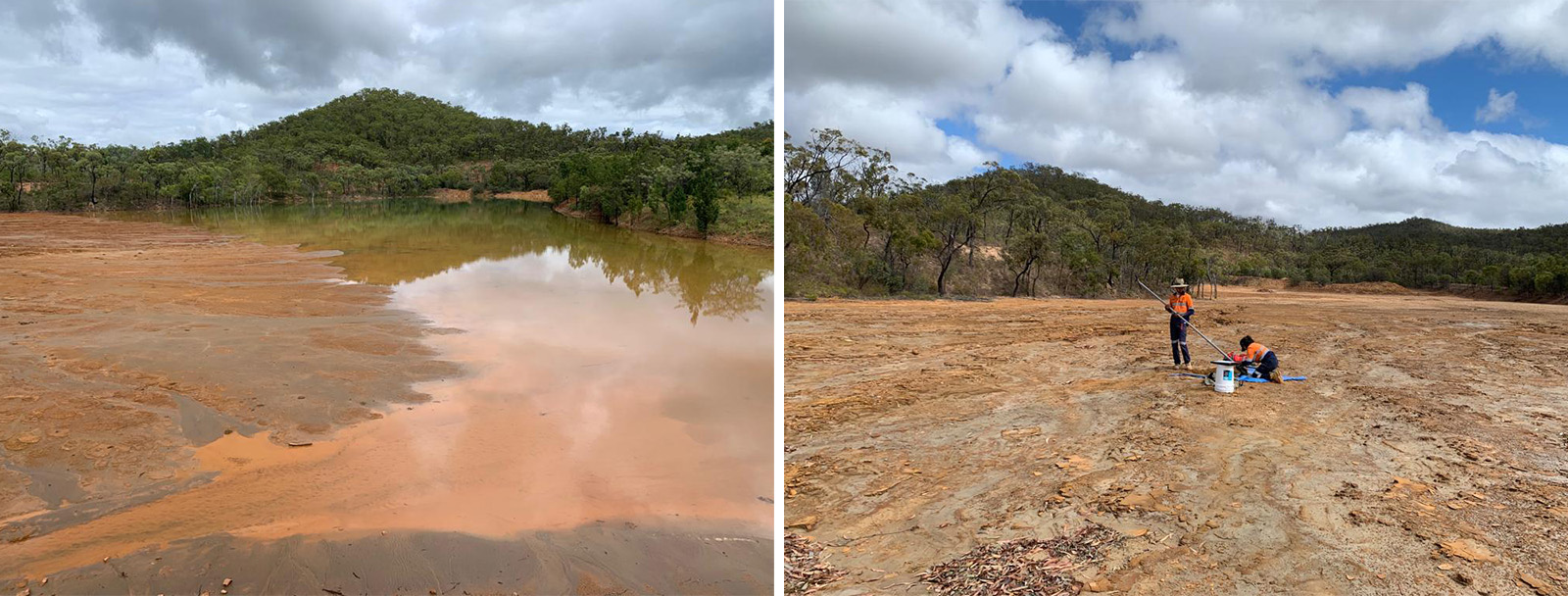
After sampling the tailings, the team set out to collect water samples from the site for Olivia’s PhD research, which focuses on the cycling of indium in mine waste environments. This included a pond on collecting tailings seepage and the nearby Chinaman Creek. Olivia will analyse the water samples and compare the results to the tailings samples to understand how indium is transferred between the solid mine wastes and aqueous environment.
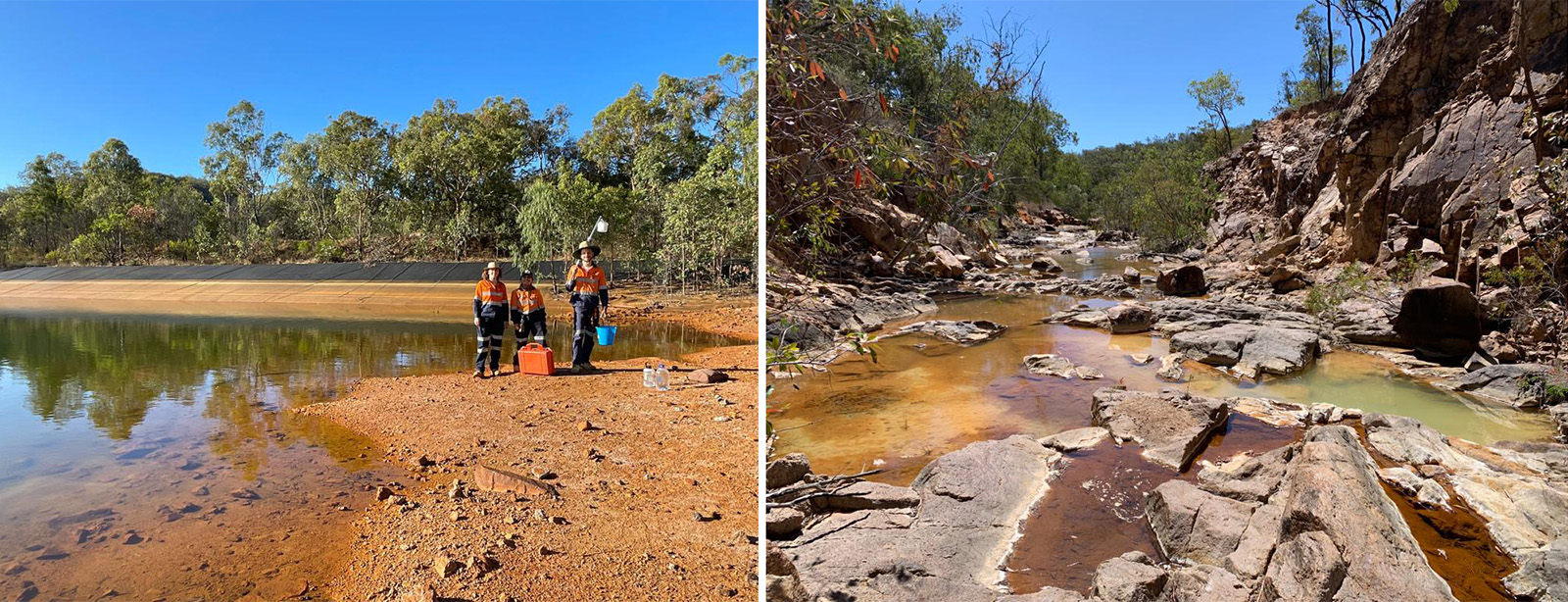
In summary, the sampling campaign was a success, and we look forward to soon finding out what is in the tailings! Many thanks to Mitchell Thompson, Kobie Johnson and Benjamin Hines from the Department of Resources, Queensland, for their help both before and during the trip to Jumna.

